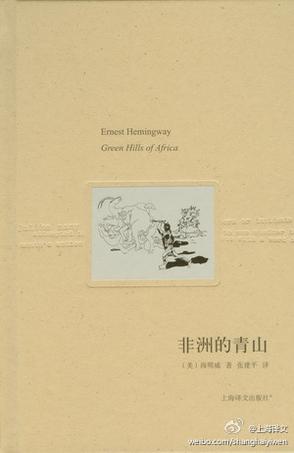-

In Our Time
THIS COLLECTION OF SHORT STORIES AND VIGNETTES MARKED ERNEST HEMINGWAY'S AMERICAN DEBUT AND MADE HIM FAMOUSWhen "In Our Time" was published in 1925, it was praised by Ford Madox Ford, John Dos Passos, and F. Scott Fitzgerald for its simple and precise use of language to convey a wide range of complex emotions, and it earned Hemingway a place beside Sherwood Anderson and Gertrude Stein among the most promising American writers of that period. "In Our Time" contains several early Hemingway classics, including the famous Nick Adams stories "Indian Camp," "The Doctor and the Doctor's Wife," "The Three Day Blow," and "The Battler," and introduces readers to the hallmarks of the Hemingway style: a lean, tough prose -- enlivened by an car for the colloquial and an eye for the realistic that suggests, through the simplest of statements, a sense of moral value and a clarity of heart.Now recognized as one of the most original short story collections in twentieth-century literature, "In Our Time" provides a key to Hemingway's later works. -

A Moveable Feast
Published posthumously in 1964, A Moveable Feast, Ernest Hemingway’s classic memoir of Paris in the 1920s, remains one of his most beloved works. Since Hemingway’s personal papers were released in 1979, scholars have examined and debated the changes made to the text before publication. Now this new special restored edition presents the original manuscript as the author intended it to be published. This volume features a personal foreword by Patrick Hemingway, Ernest’s sole surviving son, and an introduction by the editor and grandson of the author, Seán Hemingway. Also included are a number of unfinished, never-before-published sketches revealing experiences that Hemingway had with his son Jack; his first wife, Hadley; F. Scott Fitzgerald; and Ford Madox Ford, as well as insightful recollections of his own early experiments with his craft. This restored edition brilliantly evokes the exuberant mood of Paris after World War I and the unbridled creativity and unquenchable enthusiasm that Hemingway himself epitomized. -

A Moveable Feast
Published posthumously in 1964, A Moveable Feast remains one of Ernest Hemingway's most beloved works. It is his classic memoir of Paris in the 1920s, filled with irreverent portraits of other expatriate luminaries such as F. Scott Fitzgerald and Gertrude Stein; tender memories of his first wife, Hadley; and insightful recollections of his own early experiments with his craft. It is a literary feast, brilliantly evoking the exuberant mood of Paris after World War I and the youthful spirit, unbridled creativity, and unquenchable enthusiasm that Hemingway himself epitomized. -

Hills like White Elephants
The story takes place at a train station in the Ebro River valley of Spain. The year is not given, but is almost certainly contemporary to the composition (1920s). This particular day is oppressively hot and dry, and the scenery in the valley is barren and ugly for the most part. The two main characters are a man (referred to only as "the American") and his female companion, whom he calls Jig. While waiting for the train to Madrid, the American and Jig drink beer and a liquor called Anís del Toro, which Jig compares to licorice. Their conversation is mundane at first, but quickly drifts to the subject of an operation which the American is attempting to convince Jig to undergo. Though it is never made explicit in the text, it is made clear (through phrases of dialogue such as "It's just to let the air in" and "But I don't want anybody but you," among numerous context clues) that Jig is pregnant and that the procedure in question is an abortion. After posing arguments to which the American is largely unresponsive, Jig eventually assents to the operation, giving the final justification: "I don't care about me." She attempts to drop the subject, but the American persists as if still unsure of Jig's intentions and mental state. As the train approaches, it is important to note that he carries their bags to the opposing platform and has a drink alone before rejoining Jig. She smiles at him, assures him that she is "fine," and the story ends. Jig's reference to white elephants could be in reply to the baby. The American could see the baby as a white elephant and not want to raise it because of the cost, while Jig could see the child as an extraordinary addition to her mundane life of drinking and mindless traveling -

非洲的青山
1933年11月至1934年2月,海明威携第二任妻子波琳•菲佛和好友卡尔等一同前往东非的肯尼亚去打猎。回来后,海明威表示要写一部“绝对真实的书”,与“虚构的作品媲美”,于是就成就了这部“狩猎专书”《非洲的青山》。 海明威以惊人的记忆、精湛的笔法,再现了在非洲深山老林里的打猎经过,让读者身临其境般地感受到作者与动物斗智斗勇的惊险场面,聆听到非洲独有的狮吼捻叫;同时,海明威也生动地描述了自己与卡尔竞争的过程中表现出的好胜心和妒忌心,毫不留情地“解剖”了自己,表现了男子汉的率性坦诚和真男人的人格魅力。是读者零距离感受海明威独特魅力的最佳读本。 -

The Sun Also Rises
The quintessential novel of the Lost Generation, The Sun Also Rises is one of Ernest Hemingway's masterpieces and a classic example of his spare but powerful writing style. A poignant look at the disillusionment and angst of the post-World War I generation, the novel introduces two of Hemingway's most unforgettable characters: Jake Barnes and Lady Brett Ashley. The story follows the flamboyant Brett and the hapless Jake as they journey from the wild nightlife of 1920s Paris to the brutal bullfighting rings of Spain with a motley group of expatriates. It is an age of moral bankruptcy, spiritual dissolution, unrealized love, and vanishing illusions. First published in 1926, The Sun Also Rises helped to establish Hemingway as one of the greatest writers of the twentieth century